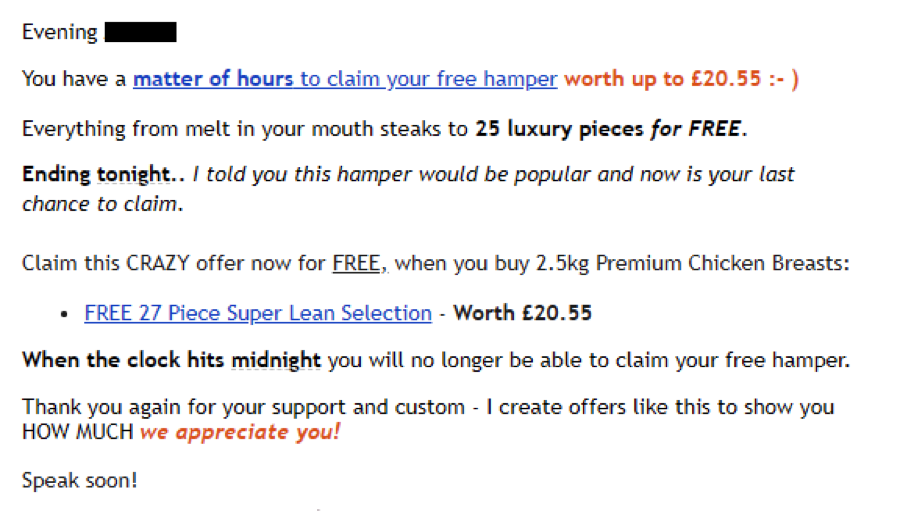
Image credit: Pexels
Let’s face it: most cold emails are only briefly scanned. Can you really blame people? If someone shows up at your door uninvited, you’re unlikely to be too interested in listening to their five-minute presentation on the merits of vacuuming without losing suction.
But the business world still requires you to email strangers, whether you’re trying to pitch them a grand idea à la Shark Tank, get their feedback, sell them something from your online store, or just forge a connection. So how do you overcome that instinctive repulsion? Well, there are a few tricks you can use…
Let’s take a look at some of them now!
1. Use Personalization… But Only If It’s Meaningful
Back when email was still relatively new, personalized subject lines and second-person pronouns must have impressed some people. “That’s my name! They know who I am!”. These days, everyone knows it doesn’t mean anything, and it doesn’t prevent anyone from recognizing a bland, boilerplate message.
Yet despite that, personalization is still incredibly important. It just needs to be meaningful personalization. Here’s an example of how not to go about this:

I get emails like this on a very frequent basis, and many of them border on pleading. I’ve provided the sender with specific feedback about why I haven’t made any purchases recently, but they’ve done nothing with that information, instead of continuing to send me the same emails that tell me over and over again how important I am to them.
This is empty personalization. If they ever sent me an email that acknowledged my feedback and gave me some ideas for future purchases, they might earn a sale, but I don’t expect that to happen. So if you’re reaching out to someone you don’t know, don’t get too personal unless you’re absolutely sure you can be accurate and appropriate. Segmentation can help you pull back or lean in as and when needed.
And what about all the styling? That leads neatly to the next point…
2. Don’t Try Too Hard
Take another look at that mess of styling up there. You could be forgiven for thinking that the writer had only just been introduced to the bold and italic options in their word processor. It’s way, way too much, and the overall impression I get is one of a desperate salesperson who doesn’t believe in the value of what they’re selling.
And that’s particularly ridiculous because the business is actually terrific, and seems to be quite stable. It certainly isn’t a fledgling company looking to kickstart profitability. As such, it should be a little more relaxed; the frantic approach really serves to undermine credibility (at least, for my tastes). Repeating your selling points over and over again mainly serves to make them seem less significant.
So play it cool, and show confidence in what you’re offering. That said, to be fair, there is one thing that email really gets right. Let’s take a look at it.
3. Provide a Clear Action
If you’re sending a cold email, then you want something. There’s no shame in that. You want the recipient to buy something, or help you in some way, and while it is important to be diplomatic, you can’t do so to the extent that you never actually get around to clearly tasking them with doing something.
If I actually had a freezer large enough to store enormous quantities of chicken, I’d be pretty happy with the actionable nature of that email. After all, it’s extremely (and persistently) clear what they’re asking me to do. That can’t be said of all emails.
Imagine that you started to read an email, but found the opening full of waffle. You’d back out in short order, wouldn’t you? You don’t want to read waffle. No one wants to read waffle. My inbox is stuffed to the virtual gills with vacuous emails I will never open and eventually consign to mass deletion.

Pictured: the only kind of acceptable waffle.
The takeaway? Keep your copy clear and punchy. Make your point, keep the reader interested, and you’ll have a chance at keeping their attention throughout. Remember that you’re setting the precedent for any future interactions. As they say, you only have one chance to make a first impression.
4. Make It Worth Their Time
Is it really worth someone’s time to read your email? Are you certain you have a compelling product, service, or proposition? Have you checked and double-checked that your audience is the right one?
If your cold emails are all actionable, assured, and not overly familiar, but they’re still falling flat, then they’re probably just not interesting enough. The good news is that there are various ways in which you add value to an email. Here are some:
- Evoke an emotional response
- Tell them something new
- Give them a compelling deal
- Provide relevant insight
- Draw the eye with style
What you do is up to you; just make sure to play to your strengths. If you can’t write well, don’t try to win them over with the quality of your writing. If you have nothing new to offer, then present something old in the best possible light.
And don’t worry if it takes you a while to get somewhere. Every marketing team, whether it’s an external supplier working in service of a dominant marketplace behemoth or a startup skeleton crew doing double-duty while figuring out how to operate their new Shopify store, must endure the same iterative process. Try, fail, and try again.
Is it possible to make cold emails so good, so compelling, that they are undeniable and irresistible? Well, probably not… but it’s something to aim for!
About the Author:
 Victoria Greene is an e-commerce marketing expert and freelance writer with an eye for great value propositions. She particularly enjoys finding creative ways to make online outreach more effective.You can read more of her work at her blog Victoria Ecommerce.
Victoria Greene is an e-commerce marketing expert and freelance writer with an eye for great value propositions. She particularly enjoys finding creative ways to make online outreach more effective.You can read more of her work at her blog Victoria Ecommerce.
Follow Us